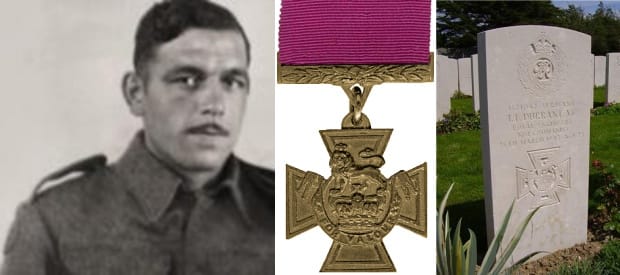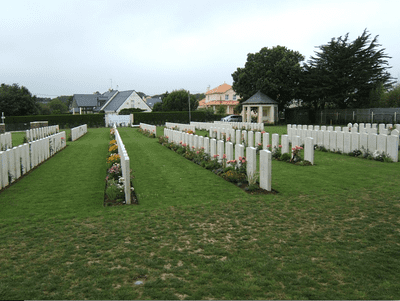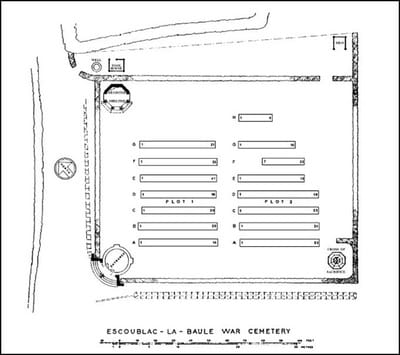ESCOUBLAC-LA-BAULE WAR CEMETERY
Loire-Atlantique
France
Location Information
Escoublac-la-Baule is 13 kilometres west of St Nazaire and the War Cemetery is south-east of Escoublac and east of La Baule, and will be located behind the small airport. The cemetery is well signposted.
Visiting Information
Wheelchair access to site possible, but may be by alternative entrance.
Historical Information
The cemetery was begun with the burial of 17 British soldiers killed in the area during 1940, 21 others who died in local hospitals, and a number of British servicemen whose bodies were washed ashore after the sinking of the troopship "Lancastria" in the Bay of Biscay on 17 June 1940. Subsequent burials include men killed in the St. Nazaire raid in 1942, and airmen shot down in the area.
The cemetery now contains 325 Commonwealth burials of the Second World War, 74 of which are unidentified. Three Polish servicemen are also buried here and one man of the Merchant Navy whose death was not due to war service.
Throughout the German occupation, Louise Jaouen, a resident of La Baule, dedicated all her time and energy to maintaining the graves. With money collected secretly from the generous local people she provided a cross for every grave and a small monument, had hedges planted, and employed a permanent gardener to tend the cemetery. Her devotion to this work was later honoured by the award of the King's Medal for Service in the Cause of Freedom.
Escoublac-la-Baule is 13 kilometres west of St Nazaire and the War Cemetery is south-east of Escoublac and east of La Baule, and will be located behind the small airport. The cemetery is well signposted.
Visiting Information
Wheelchair access to site possible, but may be by alternative entrance.
Historical Information
The cemetery was begun with the burial of 17 British soldiers killed in the area during 1940, 21 others who died in local hospitals, and a number of British servicemen whose bodies were washed ashore after the sinking of the troopship "Lancastria" in the Bay of Biscay on 17 June 1940. Subsequent burials include men killed in the St. Nazaire raid in 1942, and airmen shot down in the area.
The cemetery now contains 325 Commonwealth burials of the Second World War, 74 of which are unidentified. Three Polish servicemen are also buried here and one man of the Merchant Navy whose death was not due to war service.
Throughout the German occupation, Louise Jaouen, a resident of La Baule, dedicated all her time and energy to maintaining the graves. With money collected secretly from the generous local people she provided a cross for every grave and a small monument, had hedges planted, and employed a permanent gardener to tend the cemetery. Her devotion to this work was later honoured by the award of the King's Medal for Service in the Cause of Freedom.

1874047 Sergeant Thomas Frank Durrant. V. C.
Royal Engineers and No.1 Commando. 28th March 1942, aged 23. Plot I. D. 11.
Citation: The following details are taken from the London Gazette of 15th June, 1945 : On 28th March 1942 H.M. Motor Launch 306 was heavily attacked while proceeding up the river Loire in the raid on St Nazaire. Serjeant Durrant in charge of a Lewis gun in a completely exposed position engaged enemy guns and searchlights on shore. He was severely wounded in the arm but refused to leave his gun. Later when the launch was attacked at close range by a German destroyer, Serjeant Durrant fired coolly and continuously at the destroyer's bridge drawing on himself the enemy fire and suffering many further wounds. When so weak that he had to support himself on the gun mounting, he went on firing until his gun was silenced and the enemy boarded the motor launch and took prisoner those still alive. This very gallant and skilful N.C.O. died later of his wounds.
Picture of Headstone © Gary Rennles







